Successful construction projects rely on effective project management. From skyscrapers to residential communities, managers juggle numerous responsibilities. They must deliver projects on time, within budget, and to the highest standards.
Construction project management blends technical expertise, leadership, and problem-solving abilities. The Construction Management Association of America lists 120 responsibilities for managers. These span seven areas: project, cost, time, quality, contract, safety, and team management.
The construction industry’s close rate is about 20%. Companies must excel in project management to win contracts. Mastering this discipline helps firms deliver exceptional projects and build a stellar reputation.
This guide explores key principles, best practices, and cutting-edge tools in construction project management. It offers insights for both seasoned professionals and newcomers. You’ll learn strategies to enhance your skills and excel in this competitive field.
Key Takeaways
- Construction project management involves overseeing a project’s schedule, budget, and quality to minimize risk and ensure successful completion.
- Construction managers handle a wide range of responsibilities, including project planning, cost estimation, scheduling, quality control, safety management, and contract administration.
- Effective project management is crucial for construction companies to secure contracts and deliver projects that meet or exceed client expectations.
- Mastering the principles and best practices of construction project management can help professionals advance their careers in an increasingly competitive industry.
- Emerging technologies, such as building information modeling ( BIM), mobile solutions, and artificial intelligence, are transforming the way construction projects are managed and delivered.
Understanding the Basics of Project Management in Construction Projects
Construction project management oversees various aspects of a project from start to finish. It involves planning, organizing, and managing resources to achieve specific objectives. This process is crucial for successful project delivery in residential and commercial sectors.
Managers must balance scope, time, cost, and quality constraints. Effective coordination and communication with stakeholders are essential. These include clients, architects, engineers, contractors, and regulatory authorities.
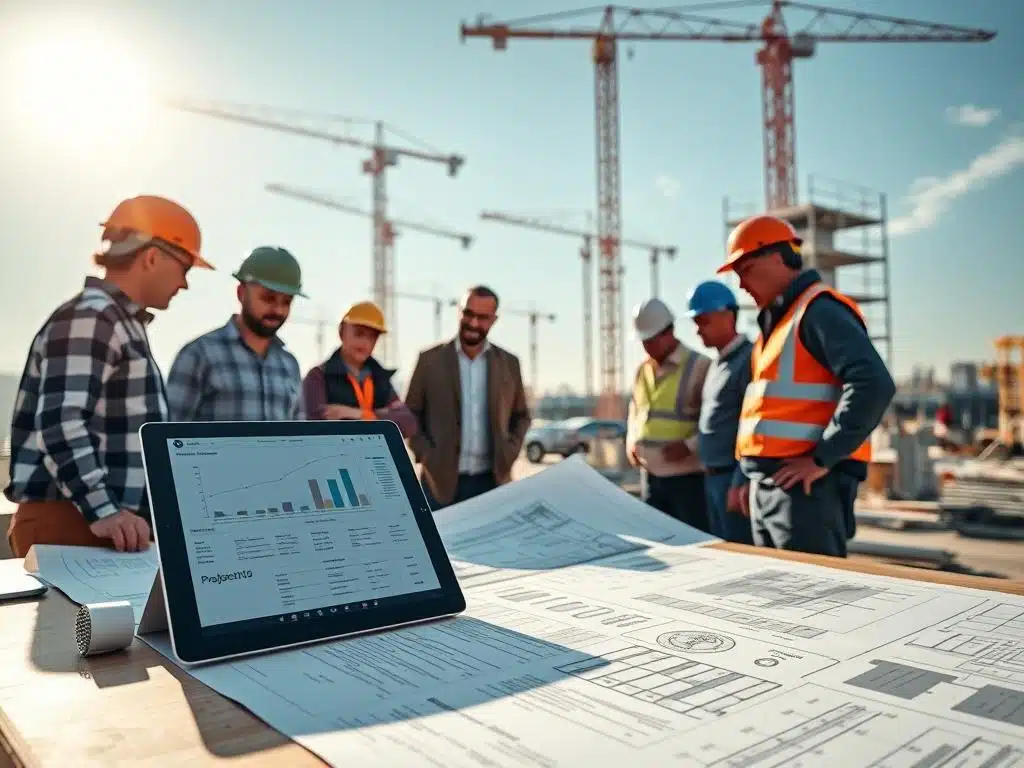
Definition and Key Objectives
Construction project management applies knowledge, skills, tools, and techniques to meet project requirements. Key objectives include completing projects within budget and on time. Ensuring quality standards, maintaining safety, and achieving client satisfaction are also crucial.
- Completing the project within the allocated budget
- Delivering the project on time
- Ensuring the project meets the required quality standards
- Maintaining a safe working environment
- Achieving client satisfaction
The Project Management Triangle: Time, Cost, and Quality
The project management triangle illustrates the relationship between time, cost, and quality. It emphasizes balancing these factors for project success. Managers must carefully consider how changes in one element impact the others.
| Element | Description | Impact on Project |
|---|---|---|
| Time | The duration required to complete the project | Delays can lead to increased costs and client dissatisfaction |
| Cost | The financial resources needed to execute the project | Budget overruns can jeopardize project viability and profitability |
| Quality | The level of workmanship and adherence to specifications | Poor quality can result in rework, delays, and reputational damage |
Accelerating the project timeline may require additional resources, increasing costs. Reducing costs might compromise quality or extend the project duration. Balancing these constraints is crucial for project success.
Successful construction project management requires a proactive approach to planning, effective communication, and continuous monitoring and control to keep the project on track and aligned with the project management triangle.
Understanding project management basics helps managers make informed decisions. They can mitigate risks and optimize resources effectively. This approach leads to projects that meet stakeholder expectations and contribute to industry success.
The Role of a Construction Project Manager
Construction project managers drive successful building projects from start to finish. They ensure timely delivery, budget adherence, and quality standards. These professionals oversee every aspect of construction with precision and expertise.
Their role demands a unique blend of skills and knowledge. Let’s delve into the essential qualities that make a great construction project manager.

Essential Skills and Qualifications
Top-notch construction project managers possess diverse skills and qualifications. These include strong leadership, in-depth construction knowledge, and proficiency in project management tools. Problem-solving abilities, financial acumen, and regulatory familiarity are equally crucial.
- Strong leadership and communication abilities
- In-depth knowledge of construction processes and techniques
- Proficiency in project management software and tools
- Excellent problem-solving and decision-making skills
- Ability to manage budgets and financial resources effectively
- Familiarity with building codes, regulations, and safety standards
Most construction project managers hold bachelor’s degrees in relevant fields. Many pursue Project Management Professional (PMP) certification to boost their credibility and expertise.
Responsibilities Throughout the Project Lifecycle
Construction project managers juggle numerous responsibilities across the entire project lifecycle. Their key duties span planning, budgeting, team coordination, and quality control.
- Planning and Scheduling: Developing comprehensive project plans, creating detailed schedules, and allocating resources efficiently.
- Budget Management: Estimating project costs, negotiating contracts, and ensuring that projects remain within budget limits.
- Team Coordination: Leading and motivating construction teams, assigning tasks, and fostering effective communication among all stakeholders.
- Quality Control: Implementing quality assurance processes, conducting regular inspections, and ensuring that all work meets the required standards.
- Risk Management: Identifying potential risks, developing mitigation strategies, and responding promptly to any issues that arise.
- Stakeholder Engagement: Communicating regularly with clients, subcontractors, and other stakeholders to keep them informed of project progress and address their concerns.
A talented project manager can make a name for themselves and have owners seek them out for their projects, highlighting the significance of exceptional project management skills in the construction industry.
Project success often hinges on the project manager’s performance. Their skills and responsibilities are crucial for delivering high-quality projects. Effective execution ensures client satisfaction and industry growth.
| Responsibility | Impact on Project Success |
|---|---|
| On-time project completion | Prevents penalties and ensures client satisfaction |
| Budget management | Keeps projects within financial constraints |
| Effective communication | Maintains transparency and prevents project failures |
| Dispute resolution | Resolves conflicts promptly to avoid delays |
| Risk management | Mitigates potential issues and ensures smooth project delivery |
Assembling a Winning Construction Project Management Team
A strong, cohesive construction project management team is vital for success. Bringing together diverse professionals helps tackle complex challenges throughout the project lifecycle. Research shows effective teamwork can boost profits by 29% in construction.

Key Team Members and Their Roles
A well-rounded construction project team includes various professionals with unique skills. Let’s explore key team members and their roles:
- C-level executives (CEO, CFO, COO, CMO): These top-level executives are responsible for setting overall goals, managing financial resources, overseeing operations, and leading marketing efforts. They must possess essential soft skills such as people focus, leadership, strategic thinking, decision-making, digital-centric behavior, and effective communication.
- Senior project managers: These experienced professionals oversee adherence to project schedules and budgets, compile reports, ensure compliance with specifications, facilitate teamwork, and collaborate with on-site personnel. They require skills in advanced project management tools, leadership, problem-solving, and architectural and engineering knowledge.
- Architects: Focused on designing projects, architects work to meet client requirements while ensuring functionality, safety, sustainability, and aesthetics. Critical skills for architects include creativity, organization, clear communication, and teamwork.
- Project managers: Responsible for estimating project costs, managing budgets, creating schedules, facilitating communication, and overseeing vendor coordination, project managers play a vital role in the overall success of construction projects by managing all aspects from start to finish.
Project executives, designers, engineers, and quality surveyors also contribute their expertise to construction project management. Each role is crucial for project success.
Fostering Effective Communication and Collaboration
Effective communication and collaboration are vital for project success. Consider these strategies to foster a collaborative environment:
- Establish clear communication channels and protocols to ensure that all team members are well-informed and aligned with project goals.
- Encourage open and transparent communication, promoting a culture of trust and accountability within the team.
- Regularly conduct team meetings and progress updates to keep everyone on the same page and address any challenges or concerns promptly.
- Utilize collaboration tools and project management software to streamline communication, share documents, and track progress in real-time.
The American Institute of Constructors (AIC) emphasizes professional certification in construction. Programs like Certified Associate Constructor (CAC) and Certified Professional Constructor (CPC) enhance skills and knowledge.
Investing in team members’ professional development improves overall performance. This contributes to the success of the construction project management process.
| Role | Key Responsibilities | Essential Skills |
|---|---|---|
| C-level Executives | Setting goals, managing finances, overseeing operations, leading marketing | Leadership, strategic thinking, decision-making, communication |
| Senior Project Managers | Overseeing schedules, budgets, reports, compliance, teamwork | Project management tools, leadership, problem-solving, architectural and engineering knowledge |
| Architects | Designing projects, meeting client requirements, ensuring functionality and aesthetics | Creativity, organization, communication, teamwork |
| Project Managers | Estimating costs, managing budgets, creating schedules, facilitating communication | Project management, budgeting, scheduling, communication, vendor coordination |
A diverse, skilled team and effective communication are key. These elements help navigate complex construction projects and achieve outstanding results.
Planning and Scheduling Construction Projects
Effective construction project planning and scheduling are crucial for successful project delivery. A comprehensive project plan, detailed schedule, and project management software tools help teams stay on track. These elements minimize risks and optimize resource allocation.
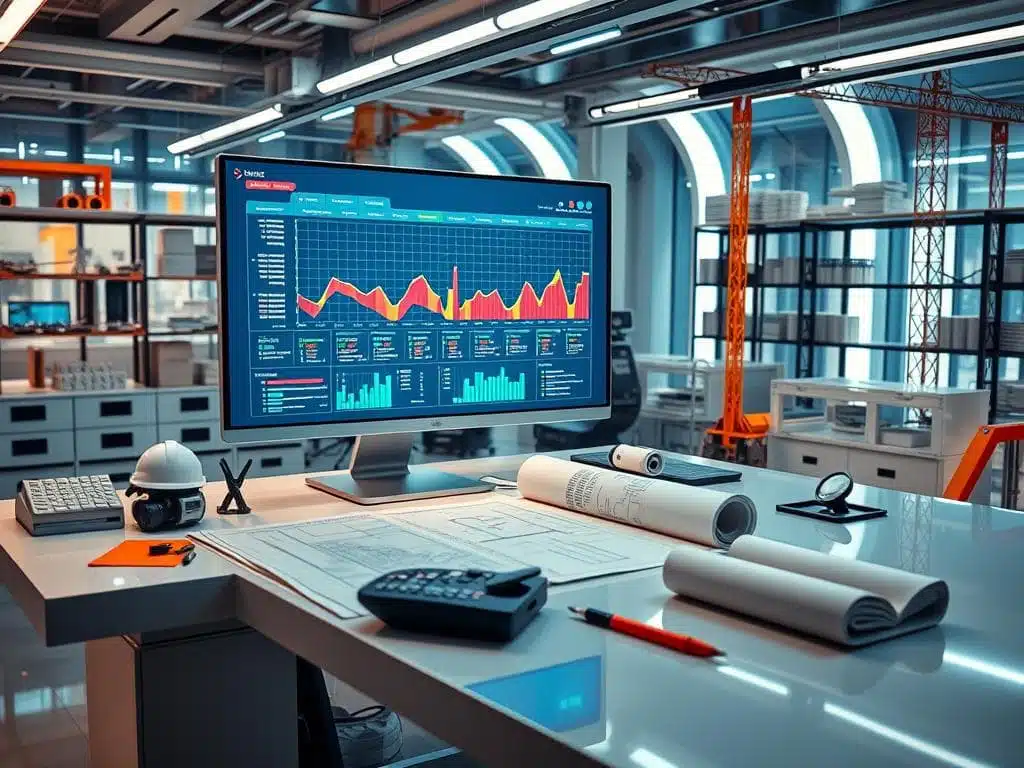
Developing a Comprehensive Project Plan
A well-crafted project plan is the foundation of any successful construction project. It should define goals, identify key tasks, and determine resource requirements. Essential elements include scope definition, work breakdown structure, and resource allocation.
Budget estimation and risk assessment strategies are also crucial components. Thorough project planning lays the groundwork for efficient execution and effective construction project scheduling.
- Scope definition
- Work breakdown structure (WBS)
- Resource allocation
- Budget estimation
- Risk assessment and mitigation strategies
Creating and Managing a Project Schedule
A well-designed project schedule is vital for keeping construction projects on track and within budget. It should detail task responsibilities, timelines, dependencies, and milestones. Notable construction scheduling techniques include Critical Path Method and Last Planner System.
Program Evaluation and Review Technique and Earned Value Management are also valuable tools. Consistent monitoring of progress helps minimize delays and optimize resource utilization.
| Technique | Description |
|---|---|
| Critical Path Method (CPM) | Identifies critical tasks and ensures focus on essential activities for project success |
| Last Planner System | Fosters predictability, efficiency, and workflow improvement in construction projects |
| Program Evaluation and Review Technique (PERT) | Assists in time estimation by prioritizing critical tasks and creating graphical timelines |
| Earned Value Management | Utilizes planned, actual, and earned values to gauge project progress and performance |
Effective scheduling aids in resource management and downtime reduction. It minimizes delays, boosts productivity, and enhances communication among team members and stakeholders.
Effective scheduling aids in resource management, downtime reduction, and delay minimization, leading to increased productivity and improved communication among team members and stakeholders.
Utilizing Project Management Software Tools
Project management software tools enhance construction planning and scheduling in today’s digital age. These tools streamline processes, improve collaboration, and provide real-time insights into project performance. Popular features include Gantt charts and resource management tools.
Project management software
Budget tracking, forecasting capabilities, and real-time progress monitoring are also valuable. Mobile and cloud-based access benefit on-site teams, optimizing planning and scheduling efforts.
- Gantt charts for visualizing task dependencies and timelines
- Resource management and allocation tools
- Budget tracking and forecasting capabilities
- Real-time progress monitoring and reporting
- Mobile and cloud-based access for on-site teams
Investing in effective construction project planning and scheduling is essential for delivering successful projects on time and within budget. Comprehensive plans and detailed schedules are crucial. Project management software tools help teams navigate complex construction projects with greater ease and efficiency.
Managing Construction Project Costs and Budgets
Effective construction project cost management is crucial for success. A well-crafted budget covers all anticipated expenses, from labor to contingencies. Meticulous cost management ensures projects stay on track and within budget.
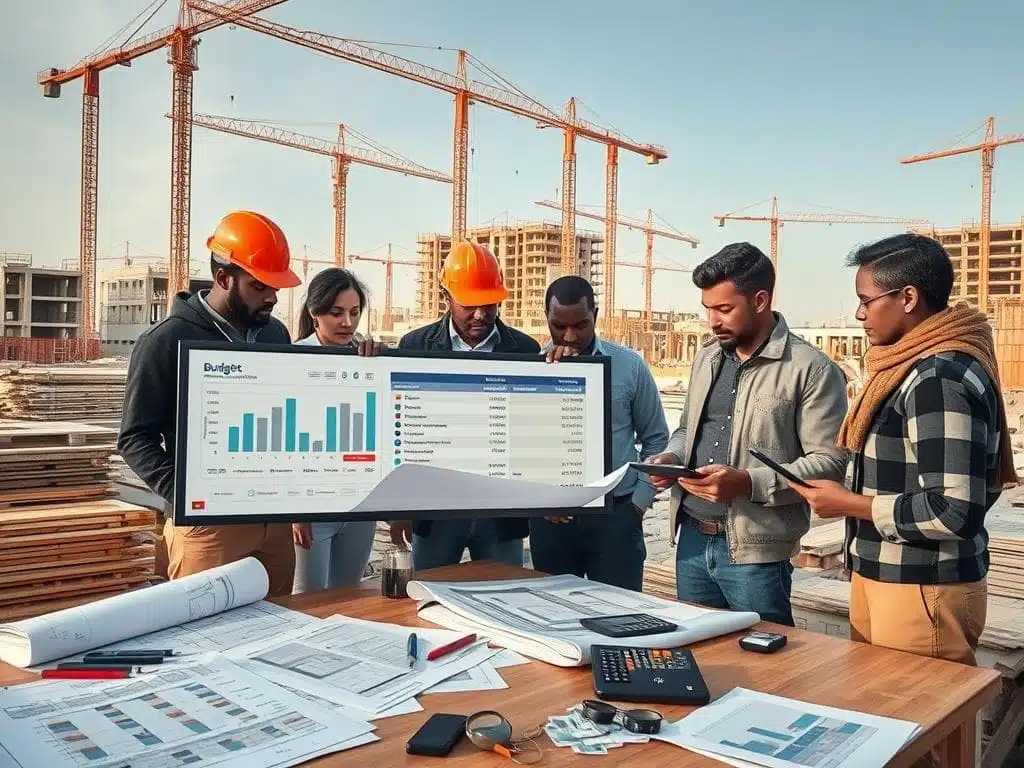
Estimating and Budgeting Techniques
Precise cost projections rely on accurate estimation and budgeting. Bottom-up and parametric estimating help develop detailed projections. A Cost Breakdown Structure provides a clear view of financial elements.
Construction budgets should be based on estimates, quotes, and contingency planning. This approach accounts for potential unknowns and variables that may change over time.
Cost Control Strategies
Implementing cost control strategies keeps projects within budget. Earned Value Management and cost variance analysis help monitor expenses throughout the project lifecycle. Real-time data from management software aids in identifying and resolving discrepancies.
Controlling costs involves analyzing expenses, reducing waste, and focusing on labor and material costs. Tracking cost variance is essential for staying on budget.
Effective cost control in construction projects can lead to increased profitability by managing costs diligently and efficiently, reducing waste and unnecessary expenses.
Companies excelling in cost control can bid more competitively for projects. This results in increased market share, revenue, and improved competitiveness. Efficient cost management also contributes to improved customer satisfaction.
Handling Change Orders and Variations
Change orders and variations can significantly impact project costs and schedules. Effective management requires a clear process for assessing impacts and communicating changes. Project management software helps monitor, control, and track changes to reduce negative impacts.
Consider these statistics illustrating the importance of cost control:
- Overall construction input prices have increased by 22.3% from a year ago, with nonresidential construction input prices showing a 23.2% increase over the same period (Associated Builders and Contractors, early 2022).
- Completing projects within budget and on time significantly boosts a construction company’s reputation, leading to increased trust and recommendations from clients and stakeholders.
- Cost control helps in identifying and mitigating potential risks early in the project lifecycle, thereby avoiding cost overruns and project delays.
Subcontractors can follow a nine-step cost control process to manage their project budget effectively:
- Preliminary budgeting
- Detailed cost breakdown
- Real-time cost tracking
- Regular expense monitoring
- Effective communication
- Variance analysis
- Change order management
- Risk management
- Reporting and analysis
Using these practices and the right tools, managers can effectively control project costs. This ensures successful project completion and long-term company success.
Ensuring Quality Control in Construction Projects
Quality control is crucial for successful construction projects. It requires strict standards, robust processes, and continuous improvement. Effective management ensures projects meet or exceed client expectations.
ISO 9001 sets seven key quality standards for construction. These include people engagement, customer focus, leadership, and process approach. Improvement, evidence-based decisions, and relationship management are also vital.

The Kaizen philosophy promotes gradual enhancements through team efforts. Six Sigma methodology complements this approach. It follows five steps: Define, Measure, Analyze, Improve, and Control.
Lean management principles target waste elimination in construction. They reduce unnecessary processes and materials. This approach streamlines operations and focuses on customer value.
Technology is essential for modern construction quality control. Manual processes often lead to inefficiencies and waste. Solutions like those from PMtech Digital Solutions can reduce costs and provide valuable insights.
Automation, accessibility, and visibility in technology solutions for construction quality control management help enhance processes, reduce costs, and build trust between construction companies and their clients.
Effective quality control requires clear communication of standards. Regular inspections and quality checklists are crucial. Prompt correction of errors and thorough problem analysis ensure continuous improvement.
- Clear communication of quality standards
- Regular inspections and quality control checklists
- Prompt correction of inaccuracies
- Thorough analysis of problems for future improvements
Implementing these practices reduces costly errors and minimizes rework. Regular communication and surveillance maintain quality control. Material inspections and performance tests are vital for quality assurance.
| Quality Control Measure | Impact |
|---|---|
| Standardized materials and methods | Ensures consistency and reduces variations |
| Risk management strategies | Proactively identifies and mitigates potential issues |
| Clear communication channels | Facilitates effective collaboration and problem-solving |
Prioritizing construction quality control leads to exceptional project delivery. It helps build a reputation as a trusted industry partner. Embracing best practices ensures we consistently exceed client expectations.
Risk Management in Construction Projects
Construction risk management is crucial for project success. It involves addressing safety hazards, budget overruns, and other potential issues. Project managers must proactively identify, assess, and mitigate risks to keep projects on track.

Identifying and Assessing Potential Risks
Effective risk management begins with identifying potential threats. This requires analyzing project scope, stakeholders, and external factors. Common construction risks include safety hazards, financial disruptions, legal issues, and resource management problems.
Risk assessment involves evaluating the likelihood and impact of each identified risk. High-impact, high-probability risks should be prioritized for immediate attention in the management process.
- Safety risks: Crew safety hazards and accidents
- Financial risks: Factors interrupting cash flow, such as cost increases
- Legal risks: Regulations, code violations, and contract disputes
- Project risks: Resource management issues and missed deadlines
- Environmental risks: Natural disasters impacting construction sites
Implementing Risk Mitigation Strategies
After understanding project risks, we can implement mitigation strategies. These approaches include avoiding risks by modifying plans, transferring risks through insurance, and implementing control measures.
Effective risk mitigation relies on collaborative communication and teamwork. Regular meetings with project teams help identify and address potential issues promptly.
- Avoiding risks by modifying project plans or scope
- Transferring risks through insurance, bonding, or contractual risk allocation
- Mitigating risks by implementing control measures and contingency plans
- Accepting risks when their impact is deemed manageable
Contingency Planning
Contingency plans are essential backup strategies for when risks materialize. These plans outline steps to minimize impact on project timelines, budgets, and quality.
Effective contingency planning involves identifying risk scenarios, developing response plans, and allocating resources. Regularly reviewing and updating these plans is crucial as the project progresses.
- Identifying potential risk scenarios
- Developing detailed response plans for each scenario
- Allocating resources and responsibilities for plan execution
- Regularly reviewing and updating contingency plans as the project progresses
| Risk Management Step | Description |
|---|---|
| Identification | List possible issues based on historical data and crew input |
| Assessment | Use a risk assessment matrix to evaluate likelihood and impact |
| Mitigation | Implement contingency plans to reduce risks, prioritize high-impact risks |
| Monitoring | Keep track of risks as they occur, monitor mitigation effectiveness |
| Reporting | Share risk management plan with stakeholders, evaluate contingency plan |
Following these steps and using risk matrix templates and project management software enhances risk management. A proactive approach minimizes risk impact and ensures successful project delivery.
Effective Communication in Construction Project Management
Effective communication is crucial in construction project management. It ensures clear project objectives, reducing costly errors and delays. Open communication enhances team collaboration and productivity, leading to successful project outcomes.
A culture of transparency fosters better understanding among team members. This approach minimizes misunderstandings and promotes a more efficient work environment. Ultimately, it contributes to the overall success of construction projects.

Stakeholder Engagement and Management
Engaging stakeholders is vital in construction project communication. Identifying key players and understanding their expectations is essential. Developing effective collaboration strategies ensures smooth project progression.
- Establishing clear lines of communication with architects, engineers, contractors, subcontractors, suppliers, and clients
- Conducting regular meetings and check-ins to ensure alignment and coordination among team members
- Actively listening to stakeholder concerns and feedback to identify potential issues early on
- Employing conflict resolution techniques like negotiation and mediation to maintain a positive working environment
Investing in stakeholder management builds strong relationships. It increases transparency and improves project outcomes. This approach creates a positive environment for all involved parties.
Reporting and Documentation
Accurate reporting and documentation are crucial for effective project communication. Maintaining clear records of progress, changes, and decisions prevents misunderstandings. It ensures all parties have access to necessary information.
- Creating and updating project plans, schedules, and budgets
- Documenting change orders, RFIs, and other important project communications
- Generating regular progress reports for stakeholders
- Maintaining a centralized repository for project documents and information
Prioritizing reporting and documentation keeps stakeholders informed. It enables them to make sound decisions and stay on track. This practice contributes to smoother project execution.
Effective communication is the foundation of successful construction project management. It enables us to build trust, foster collaboration, and deliver projects on time, within budget, and to the highest quality standards.
Technology enhances communication in construction project management. Project management software and mobile apps provide real-time updates. These tools streamline documentation and improve overall project efficiency.
Embracing innovation refines communication strategies. It sets the stage for success in challenging construction projects. Continuous improvement in this area leads to better project outcomes.
Managing Contracts and Procurement in Construction Projects
Effective management of contracts and procurement is crucial for successful construction projects. It ensures smooth execution and maintains profitability. Contract management involves drafting, negotiating, and administering agreements with stakeholders. Procurement focuses on identifying resource requirements and selecting reliable suppliers and subcontractors.
Construction project managers must understand contract law, procurement practices, and supply chain management. These skills help deliver projects on time, within budget, and to quality standards. Procurement can account for up to 70% of a company’s total spending.
The construction procurement process requires seamless integration among functions. This approach prevents mistakes, re-forecasting, costly change orders, and budget overages. Procurement managers must strategically accommodate shifts in deliveries, scope, or schedules.
Creating requests for proposals and bidding is crucial in today’s construction climate. This process addresses tight labor supply and supply chain disruptions. Managers must balance complex schedules for both people and materials.
Construction procurement managers must manage complex schedules for both people and materials to ensure the workforce has what it needs to move the build forward.
Various procurement models are used in the construction industry. Each model has its own advantages and challenges:
- Design-Bid-Build: The owner conceives a design with an architect, leading to a contractual responsibility for the contractor to bring the project in on time and on budget.
- Design and Build: A contractor negotiates a fixed price to design and build the project, streamlining the process for the client by dealing with only one entity.
- Management Contracts: Different contractors handle various functions for a fixed fee, often used on large projects where one Managing Contractor oversees design, construction documents, and project management.
- Construction Management: The owner appoints a management team to oversee the procurement process on a fee basis, ensuring smooth coordination among multiple contractors.
- Private Finance: A contractor designs and builds a project and leases it to the client, enabling projects to proceed even when clients lack the required capital.
New procurement ideas offer efficient project delivery in construction. Progressive Design-Build, public-private partnerships, and Integrated Project Delivery promote collaboration among team members. These models aim to optimize project outcomes through shared risk and reward.
| Procurement Process Stage | Key Activities |
|---|---|
| Planning | Defining specifications, cost estimation, procurement strategy, and sending out RFPs |
| Acquisition | Selecting GC, signing contracts, and planning procurement sequence |
| Contract Management | Monitoring and controlling procurement activities, ensuring timely delivery and quality |
Successful construction contract management and procurement require collaboration among various stakeholders. This includes architects, engineers, contractors, subcontractors, suppliers, and specialists. Ensuring the availability of materials, equipment, and skilled labor optimizes project timelines and cost efficiency.
Monitoring and Controlling Construction Progress
Tracking construction progress is vital for project success. Project managers must monitor key performance indicators, hold regular meetings, and address delays promptly. These practices help keep projects on schedule and within budget.
Tracking Key Performance Indicators (KPIs)
Project managers must identify and track relevant KPIs. These include schedule variance, cost variance, quality metrics, safety incidents, and resource utilization.
Project management software boosts visibility by 80% through real-time tracking. Construction-specific tools improve cost estimation by 30% and enhance resource allocation by 25%.
Conducting Regular Progress Meetings
Regular meetings keep team members and stakeholders informed about project status. These meetings cover progress updates, milestone achievements, challenges, and action items.
Effective communication decreases project delays by 10% and reduces misunderstandings by 15% throughout the project lifecycle.
Addressing Delays and Corrective Actions
When delays occur, project managers must take corrective actions. Strategies include re-sequencing work, adding resources to critical tasks, adjusting schedules, and collaborating with stakeholders.
Early problem resolution reduces project risks by 25% and minimizes delays by 20%. Data analytics improve project performance analysis by 20%, aiding informed decision-making.
Proactive management of construction delays is key to maintaining project momentum and ensuring successful outcomes.
Focusing on progress monitoring, KPI tracking, and delay management strategies helps project managers deliver successful results. These practices ensure projects stay on track and meet client expectations.
Safety Management in Construction Projects
Safety management is crucial for successful construction projects. It protects workers and ensures smooth project execution. A strong safety focus creates a productive environment and boosts employee satisfaction.
Developing and Implementing a Safety Plan
A well-crafted safety plan is essential for effective construction safety management. This document outlines policies and procedures to minimize risks on job sites. A 2022 study showed that reducing perceived health risks improves job satisfaction and safety program participation.
Consider unique project hazards when developing a safety plan. Conduct thorough risk assessments and incorporate industry best practices. Regular audits ensure policy adherence and identify areas for improvement.
Ensuring Compliance with Safety Regulations
Project managers must stay current with safety regulations and comply with standards like OSHA’s. Non-compliance risks worker safety and can lead to fines and legal issues.
Maintain compliance by regularly updating procedures and conducting inspections. Provide ongoing team training. Safety management investment has improved project schedules by 4.2% and budgets by 4.4%.
Promoting a Safety-First Culture
A safety-first culture is vital for construction project success. Foster open communication and encourage hazard reporting. Recognize and reward safe work practices. Most contractors agree safety programs impact quality management and secure new work.
Daily toolbox talks effectively promote safety culture. These brief meetings discuss concerns and reinforce safety protocols. Studies show toolbox talks can reduce the Total Recordable Incident Rate by 73%.
| Safety Statistic | Impact |
|---|---|
| Falls from height | Primary cause of construction workplace fatalities |
| Fatal Four | 60% of construction worker deaths in 2017 (falls, struck by object, electrocution, caught-in/between) |
| Quickbase adoption | 31% reduction in safety incidents and 70% decrease in lost time (Harvey Building Product) |
Innovative technologies like virtual reality and AI-powered platforms enhance hazard identification. Prioritizing safety management protects workers and contributes to industry success. It ensures project sustainability and long-term growth in construction.
Leveraging Technology in Construction Project Management
Technology is revolutionizing construction project management, offering new tools to boost efficiency and collaboration. Innovative technologies streamline processes, minimize risks, and deliver high-quality projects. Let’s explore some impactful technologies transforming the construction industry.
Building Information Modeling (BIM)
Building Information Modeling ( BIM) is a game-changer in construction technology. It creates digital representations of projects, enabling collaboration and clash detection. BIM allows teams to visualize designs in 3D and resolve conflicts before construction begins.
This technology enhances communication among stakeholders and optimizes project schedules. Companies using BIM have seen a 30% decrease in construction rework costs, demonstrating its efficiency and cost-saving potential.
- Visualize and analyze project designs in 3D
- Identify and resolve potential conflicts before construction begins
- Enhance communication and collaboration among project stakeholders
- Optimize project schedules and resource allocation
Mobile and Cloud-Based Solutions
Mobile and cloud-based solutions are changing how we manage construction projects. These technologies enable real-time communication, data sharing, and project monitoring from anywhere. Key benefits include seamless collaboration and instant access to project documents.
These solutions improve decision-making through real-time data insights. Construction companies using mobile apps for project management report saving 15% in communication costs, highlighting tangible benefits.
- Seamless collaboration among project team members
- Instant access to project documents and updates
- Improved decision-making through real-time data insights
- Reduced communication costs and increased productivity
Emerging Technologies: AI, IoT, and Robotics
Artificial Intelligence (AI), Internet of Things (IoT), and robotics are set to transform construction project management. These cutting-edge technologies can optimize processes, improve safety, and enhance project outcomes. Let’s explore some exciting applications:
| Technology | Application | Benefits |
|---|---|---|
| AI | Predictive analytics for project planning and risk mitigation | Minimized downtime, increased productivity |
| IoT | Real-time monitoring of construction sites and equipment | Enhanced safety, reduced accident risks |
| Robotics | Automated construction tasks and precision manufacturing | Improved quality, increased efficiency |
The integration of AI and project management software in construction is essential for competitive advantage, efficiency, and meeting project demands, improving operational efficiencies and staffing functions for smarter, more sustainable building practices.
Embracing these emerging technologies drives innovation and overcomes challenges in construction project management. They shape the future of the industry, creating smarter and more efficient building practices.
Sustainable Construction and Green Building Practices
Sustainable construction and green building practices are vital in today’s construction industry. These methods minimize environmental impact while ensuring long-term building efficiency. Project managers must prioritize these practices to create eco-friendly structures.
Sustainable construction uses eco-friendly materials and focuses on waste reduction. It also optimizes energy and water efficiency. These practices can reduce material waste by 3% to 5% during project execution. This leads to cost savings and less environmental impact.
“The introduction of technology in construction by start-up companies, such as Scaled Robotics, aims to prevent reworks that can lead to significant cost savings and improved sustainability.” – Construction Industry Expert
Green building certifications like LEED and BREEAM guide sustainable construction. They consider factors such as energy efficiency, water conservation, and indoor air quality. Project managers must understand these certifications to integrate their requirements into projects.
| Sustainable Construction Practice | Benefits |
|---|---|
| Offsite construction | More energy-efficient than traditional methods |
| Green construction materials (e.g., green concrete, low VOC paints) | Reduce energy consumption and improve sustainability |
| Construction management software (e.g., Fieldwire) | Eliminates paper waste and reduces the use of outdated information on-site |
The number of green buildings is doubling every three years. A survey shows 60% of projects were expected to be green by 2018. This growth stems from recognizing the benefits of sustainable buildings.
Green buildings offer lower running costs and enhanced worker productivity. They also improve occupant well-being. Construction managers must stay informed about sustainable practices and technologies. This knowledge helps create environmentally friendly buildings with long-term value.
Agile Project Management in Construction
Agile project management offers a solution to construction industry challenges. It enhances flexibility, collaboration, and continuous improvement for better project outcomes. Teams can tackle delays and cost overruns more effectively with this approach.
Large projects often face significant delays and budget issues. They typically take 20% longer to finish and experience an 80% cost overrun. Only 25% of projects meet their original deadlines within 10%.
Agile construction management breaks projects into smaller, manageable work items. This approach focuses on customer needs, fostering adaptability and resource efficiency. It helps teams deliver projects more effectively.
Agile project management in construction emphasizes flexibility, collaboration, and continuous improvement, enabling teams to deliver projects more efficiently and effectively.
Communication and collaboration improve with agile methodologies in construction. Daily “stand-up” meetings allow teams to sync progress and identify issues. Regular feedback loops and retrospectives promote continuous improvement and adaptability.
Early problem identification becomes possible in the project lifecycle. This proactive approach helps teams address challenges before they escalate. It leads to smoother project execution and better outcomes.
| Benefit | Percentage |
|---|---|
| Ability to handle changing priorities | 70% |
| Project visibility | 65% |
| Business/IT alignment | 65% |
Lean construction complements agile by eliminating waste and optimizing value. Techniques like the Last Planner System and Kanban boards help visualize workflow stages. These tools track progress and identify constraints, improving project delivery times.
Agile adoption in construction has surged, increasing 86% since 2020. Over 7.5 million U.S. construction contractors use agile methods. This approach contributes nearly 4.4% to the country’s GDP.
Agile practices optimize project planning and implementation phases. From design to maintenance, teams can drive faster development timetables. This approach promotes a culture of continuous improvement in construction projects.
- Agile construction involves breaking down large projects into smaller, manageable work items based on customer needs.
- Agile methodologies enhance communication and collaboration among team members and stakeholders in the construction industry.
- Agile practices can significantly reduce construction project completion times by focusing on delivering smaller units of work efficiently and responding promptly to changing requirements.
The construction industry continues to evolve. Embracing agile project management and lean principles is crucial for success. Organizations can optimize performance, drive efficiency, and deliver successful projects in this competitive landscape.
Best Practices and Case Studies in Construction Project Management
Construction project management’s landscape is ever-changing. Adopting best practices and learning from successful case studies can significantly improve project outcomes. Proven strategies and innovative technologies help streamline processes and enhance collaboration.
A key best practice is developing clear project goals and plans. This involves defining scope, establishing realistic timelines, and setting measurable objectives. A well-defined roadmap ensures all stakeholders are aligned towards a common vision.
Effective communication and collaboration among team members is crucial. Regular meetings, clear communication lines, and collaborative tools foster transparency and teamwork. This approach helps projects stay on track and overcome challenges.
PMtech Digital Solutions: Streamlining Construction Projects
PMtech Digital Solutions exemplifies how technology can revolutionize construction project management. This innovative company leverages cutting-edge technologies to streamline projects and drive efficiency.
“PMtech Digital Solutions has transformed the way we manage our construction projects. Their cloud-based platform has enabled real-time collaboration, improved decision-making, and significantly reduced project delays.” – Sarah Johnson, Senior Project Manager
PMtech’s comprehensive software offers numerous benefits to project teams. These include real-time access to project information and streamlined workflows. The software also enhances communication and improves budget management.
- Real-time access to project information, ensuring everyone is informed and reducing delays
- Streamlined workflows and automated processes, saving time and minimizing errors
- Enhanced communication and collaboration among team members, fostering a more efficient work environment
- Improved budget management and cost control through powerful financial tracking tools
| Traditional Project Management | PMtech Digital Solutions |
|---|---|
| Manual processes and paperwork | Automated workflows and digital documentation |
| Delayed communication and information silos | Real-time collaboration and data accessibility |
| Limited visibility into project progress | Comprehensive project dashboards and analytics |
| Reactive approach to risk management | Proactive risk identification and mitigation strategies |
PMtech Digital Solutions’ success story showcases technology’s potential in construction project management. By embracing best practices and innovative solutions, managers can drive efficiency and mitigate risks. This approach helps deliver projects on time and within budget.
Conclusion
This construction project management guide covers key aspects of delivering successful construction projects. We’ve explored essentials from project basics to team assembly, planning, and budgeting. Quality, safety, and technology utilization are also crucial elements for project success.
The construction industry evolves with focus on sustainability, digitalization, and innovation. Project managers who stay current with tools and techniques are poised for success. Adopting agile methods and technologies like BIM, AI, and IoT drives efficiency and minimizes risks.
Effective management goes beyond timelines and budgets. It creates value for stakeholders, from owners to end-users and the community. By applying these principles, managers can meet industry challenges head-on.
Construction project managers can build a brighter, sustainable future. They’ll achieve this by keeping stakeholder value in focus and using the strategies outlined here.
Frequently Asked Questions
What is construction project management?
Construction project management oversees projects from start to finish. It controls scope, cost, time, and quality. This process involves planning, coordinating, budgeting, and supervising to ensure successful completion.
What are the key objectives of construction project management?
The main goals are controlling scope, cost, time, and quality. Balancing these elements, known as the “triple constraint,” is crucial. This balance ensures successful project delivery.
What are the responsibilities of a construction project manager?
A construction project manager estimates and negotiates costs. They formulate budgets, manage schedules, and determine appropriate management methods. They communicate with owners and stakeholders, and lead construction site workers.
What are the essential skills and qualifications for a construction project manager?
Construction project managers need a deep understanding of the construction process. They typically hold a Project Management Professional (PMP) certification. Strong leadership, communication, problem-solving, and organizational skills are essential.
Who are the key team members in a construction project management team?
Key members include the project owner, who finances the project. The construction project manager plans, coordinates, and supervises. The general contractor oversees daily operations and provides resources. Subcontractors specialize in specific construction areas.
What are the essential components of planning and scheduling construction projects?
Developing a comprehensive plan involves defining goals, identifying tasks, and determining resource needs. Creating a project schedule ensures timely task completion. Project management software, like Gantt charts, helps track progress effectively.
How do construction project managers manage project costs and budgets?
Effective cost management uses estimating techniques to develop accurate projections. Cost control strategies monitor project expenses throughout its lifecycle. Clear processes for handling change orders assess impact on costs and schedules.
What is the role of quality management in construction projects?
Quality management ensures projects meet required standards and specifications. It involves monitoring and verifying construction work quality. This includes conducting inspections, testing, documenting deficiencies, and implementing corrective actions.
How do construction project managers handle risk management?
Effective risk management identifies and assesses potential risks. It implements mitigation strategies and develops contingency plans. Managers analyze project scope and factors to determine risk likelihood and impact.
What is the importance of effective communication in construction project management?
Effective communication is vital for successful project management. It involves stakeholder engagement, regular reporting, and clear communication plans. Managers must establish regular meetings and maintain accurate project documentation.
How do construction project managers handle contract management and procurement?
Contract management involves drafting, negotiating, and administering contracts. Procurement management identifies resource requirements and selects suppliers. Managers need understanding of contract law and procurement best practices.
What is the role of safety management in construction projects?
Safety management is a top priority in construction. It involves developing and implementing a comprehensive safety plan. Managers must ensure compliance with regulations and promote a safety-first culture.
How is technology transforming construction project management?
Technology provides new tools for improving project management. Building Information Modeling (BIM) and cloud-based solutions optimize processes. Emerging tech like AI and IoT enhance project outcomes and safety.
What are sustainable construction and green building practices?
Sustainable construction uses eco-friendly materials and minimizes waste. It optimizes energy and water efficiency. Green building certifications like LEED provide frameworks for sustainable buildings. Managers must integrate these practices into project planning.
What are agile and lean construction management approaches?
Agile construction uses iterative and collaborative approaches. It focuses on flexibility and continuous improvement. Lean construction eliminates waste and optimizes value. These principles improve outcomes by fostering collaboration and adaptability.
What are some best practices in construction project management?
Best practices include developing clear goals and plans. They foster effective communication and collaboration among team members. Implementing robust risk management strategies is crucial. Leveraging technology improves project efficiency and effectiveness





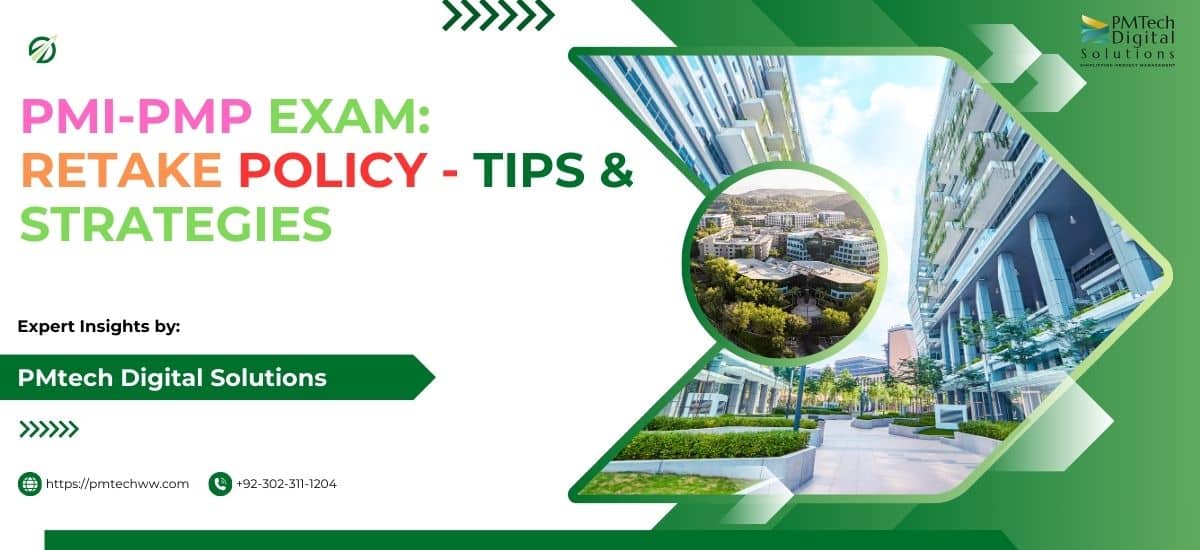
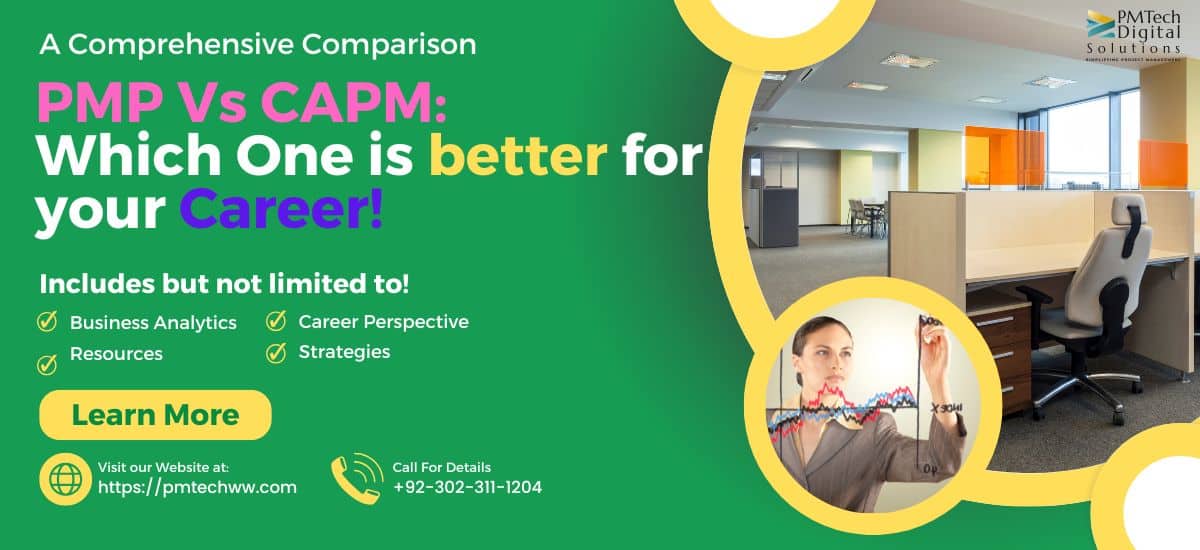





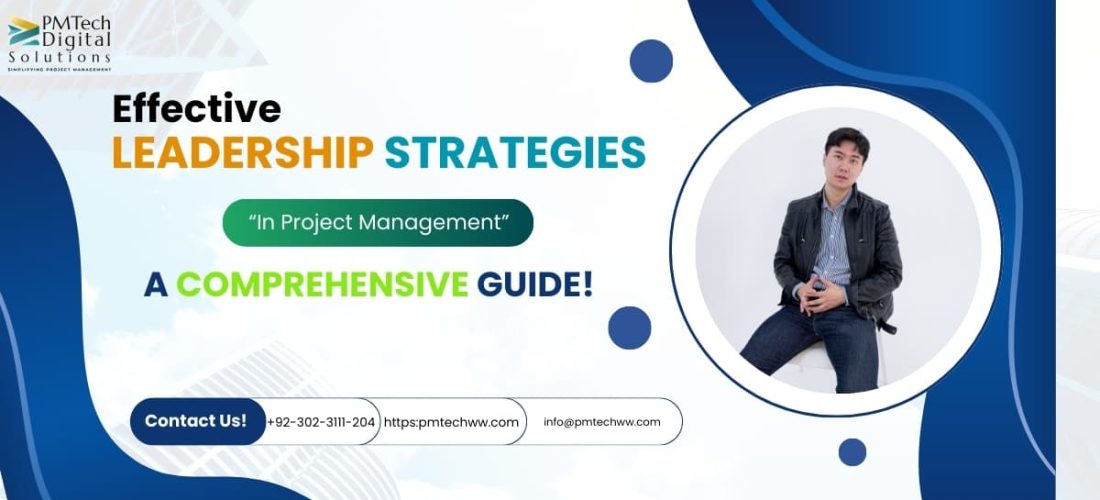
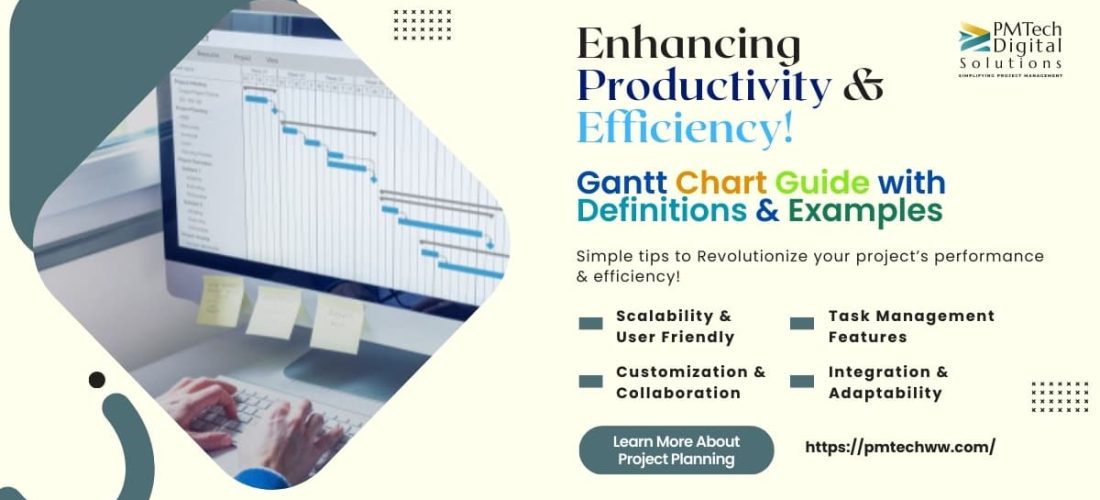


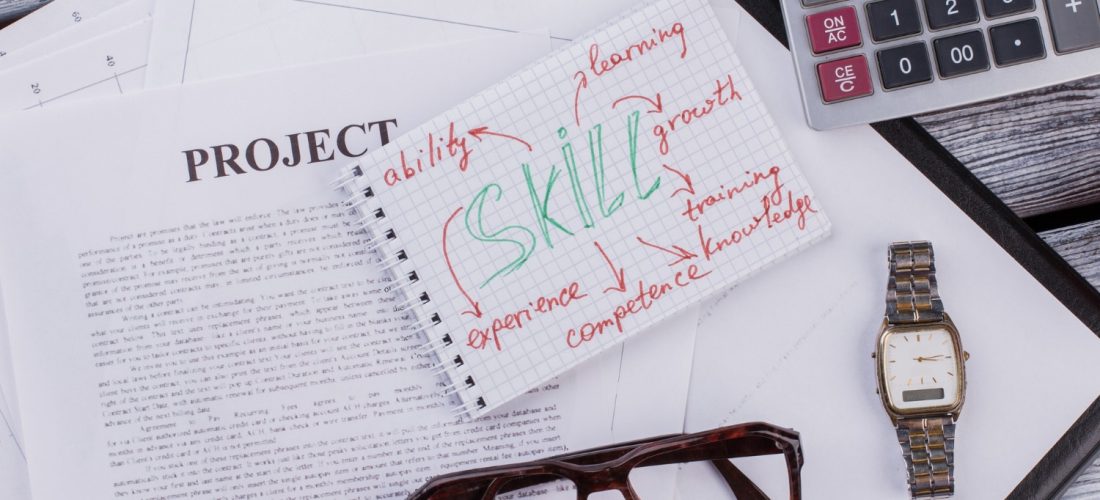
37 Responses
Can you be more specific about the content of your article? After reading it, I still have some doubts. Hope you can help me.
Thank you for your sharing. I am worried that I lack creative ideas. It is your article that makes me full of hope. Thank you. But, I have a question, can you help me?
Hello it’s me, I am also visiting this web page daily, this site is in fact pleasant and the users are genuinely sharing good thoughts.
Feel free to surf to my page nordvpn coupons inspiresensation
Aw, this was a very good post. Taking the time
and actual effort to generate a top notch article… but what can I say… I put things off a whole lot and don’t manage to get anything done.
My web site; nordvpn coupons inspiresensation (easyurl.cc)
350fairfax nordvpn coupons inspiresensation
I am sure this piece of writing has touched all the internet people, its
really really good post on building up new weblog.
Thanks for sharing. I read many of your blog posts, cool, your blog is very good.
constantly i used to read smaller articles which as well clear
their motive, and that is also happening with this article which I am reading now.
Look at my web-site – eharmony special coupon code 2025
Can you be more specific about the content of your article? After reading it, I still have some doubts. Hope you can help me.
Why people still make use of to read news papers when in this technological globe everything is available on net?
Stop by my blog; vpn
Your point of view caught my eye and was very interesting. Thanks. I have a question for you.
Thank you for your sharing. I am worried that I lack creative ideas. It is your article that makes me full of hope. Thank you. But, I have a question, can you help me?
Very well presented. Every quote was awesome and thanks for sharing the content. Keep sharing and keep motivating others.
Hello there! This post couldn’t be written much better!
Reading through this article reminds me of
my previous roommate! He continually kept talking about this.
I’ll send this post to him. Pretty sure he’ll have a great read.
Many thanks for sharing! gamefly https://tinyurl.com/23mmjj8a
Yes! Finally something about what is a vpn. https://tinyurl.com/23bovxld what is a vpn connection
Your article helped me a lot, is there any more related content? Thanks!
Hello there! I could have sworn I’ve been to this blog before but after reading through some of the post I realized
it’s new to me. Anyhow, I’m definitely happy I found it and I’ll be
book-marking and checking back frequently!
Hello There. I found your blog using msn. This is
an extremely well written article. I’ll be sure to bookmark it and return to read more of your useful info.
Thanks for the post. I will definitely return.
I don’t think the title of your article matches the content lol. Just kidding, mainly because I had some doubts after reading the article. https://www.binance.info/si-LK/register?ref=V2H9AFPY
I don’t think the title of your article matches the content lol. Just kidding, mainly because I had some doubts after reading the article.
Outstanding work, exactly the deep clean we were looking for. This is our go-to service now. You guys rock.
It’s amazing in favor of me to have a website, which is helpful designed for
my experience. thanks admin https://tinyurl.com/ymjk7uac eharmony special coupon code 2025
I don’t think the title of your article matches the content lol. Just kidding, mainly because I had some doubts after reading the article.
winstrol anavar stack
References:
Types of Steriods – A21347410b.Iask.In,
when did bodybuilders start using steroids
References:
http://www.mathhomeworkanswers.org
where can u buy steroids
References:
http://community.srhtech.net/
steroid pills vs injection
References:
to-portal.com
Hello there! Do you know if they make any plugins
to safeguard against hackers? I’m kinda paranoid
about losing everything I’ve worked hard on. Any recommendations?
my website – https://tinyurl.com/ms8n5mcm
legal steroids bodybuilding forum
References:
https://md.un-hack-bar.de/
anavar price
References:
http://www.google.com.sb
why do doctors prescribe steroids
References:
https://output.jsbin.com/zewobedove
what are steroids and how do they work
References:
https://www.google.fm/
anabolic steroids brands
References:
gitea.ashcloud.com
Thank you for your sharing. I am worried that I lack creative ideas. It is your article that makes me full of hope. Thank you. But, I have a question, can you help me?
Thanks for sharing. I read many of your blog posts, cool, your blog is very good. https://www.binance.info/register?ref=P9L9FQKY
Thank you for your sharing. I am worried that I lack creative ideas. It is your article that makes me full of hope. Thank you. But, I have a question, can you help me?
Can you be more specific about the content of your article? After reading it, I still have some doubts. Hope you can help me. https://accounts.binance.info/en-ZA/register-person?ref=B4EPR6J0
Boss77ph is legit, mga brad! Easy to navigate, and the games load fast. I liked their selection. Try it out! Baka ikaw na ang susunod na milyonaryo! Check them out: boss77ph